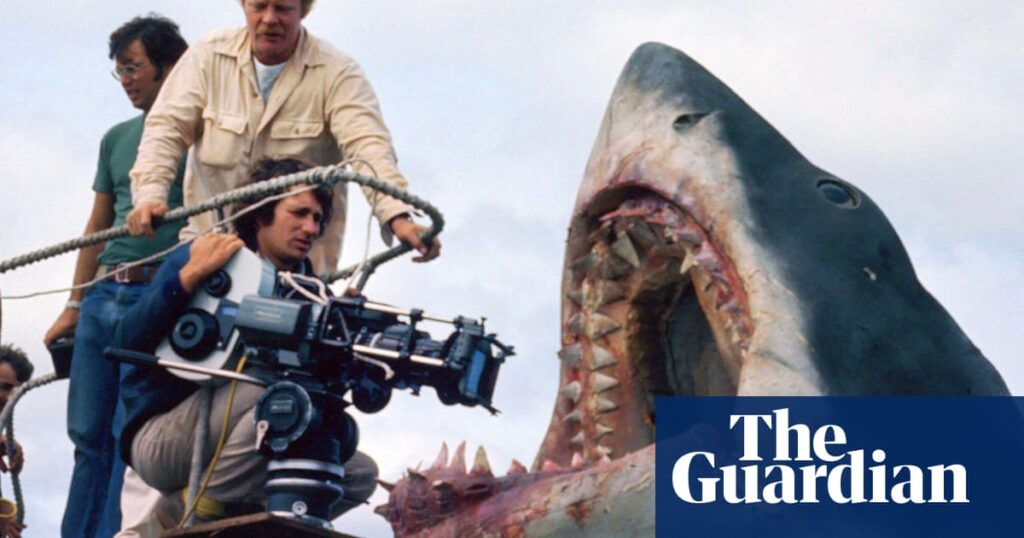
Half a century after its release, the impact of Jaws continues to ripple through the film industry and public consciousness. Released on June 20, 1975, the film marked a seismic shift in Hollywood, effectively creating the summer blockbuster phenomenon. Directed by a young Steven Spielberg, Jaws not only instilled a deep fear of sharks but also sparked an interest in marine conservation, a dual legacy that remains relevant today.
Richard Dreyfuss, who played marine biologist Matt Hooper, still feels the film’s impact personally. “I have never gone back in the water,” he admits, reflecting on the movie’s ability to make audiences acutely aware of the unseen dangers lurking beneath the ocean’s surface. The film’s portrayal of a great white shark terrorizing the fictional Amity Island forever changed the public’s perception of these ancient predators.
The Making of a Blockbuster
Based on Peter Benchley’s novel, Jaws tells the story of a monstrous shark and the trio of men—police chief Martin Brody, marine biologist Matt Hooper, and fisherman Quint—who set out to stop it. The film’s success was unprecedented, becoming the first to earn over $100 million in theatrical rentals. This achievement paved the way for future blockbusters like Star Wars and the Marvel Cinematic Universe.
The dynamic between the three leads, played by Dreyfuss, Roy Scheider, and Robert Shaw, was central to the film’s appeal. Dreyfuss, now 77, recalls the challenges and triumphs of the production. Initially hesitant to join the project, he was ultimately convinced after seeing a rough cut of another film he had worked on, fearing it might end his career.
Challenges and Innovations
Filming Jaws was fraught with difficulties. Spielberg insisted on shooting in the open ocean off Martha’s Vineyard, which led to budget overruns and delays. The mechanical shark, nicknamed “Bruce,” frequently malfunctioned, forcing Spielberg to adopt a less-is-more approach influenced by Alfred Hitchcock. This decision, coupled with John Williams’ iconic two-note score, heightened the film’s suspense and terror.
“The shark is not working. The shark is not working. Repeat. The shark is not working.” — Richard Dreyfuss
Despite these setbacks, the film’s innovative techniques contributed to its status as a masterpiece. Spielberg’s ability to imply the shark’s presence rather than show it directly created a tension that captivated audiences worldwide.
The Cultural Impact of Jaws
Jaws was more than just a film; it became a cultural phenomenon. Its release was strategically timed for the summer, accompanied by a major advertising campaign and the memorable tagline, “See it before you go swimming!” The film’s success demonstrated the potential of cinema to influence society on a massive scale.
However, the film also contributed to the widespread fear of sharks, leading to a dramatic decline in their populations. Spielberg himself has expressed regret over this unintended consequence. Yet, the film also sparked a wave of interest in marine science and conservation, a legacy championed by Benchley and his wife, Wendy.
“Jaws tapped into an innate fear of being eaten by a monster… but it intrigued them and they want to know more about sharks.” — Wendy Benchley
Debunking Myths and Misconceptions
Over the years, myths surrounding the making of Jaws have emerged, including a rumored feud between Dreyfuss and Shaw. Dreyfuss vehemently denies these claims, emphasizing the respect and admiration he had for Shaw. The alleged animosity has been explored in various media, but Dreyfuss insists it was a fabrication.
Moreover, the film’s portrayal of sharks as mindless killers has been challenged by experts who emphasize their ecological importance. The Benchleys dedicated their lives to marine conservation, using the film’s notoriety to educate the public about the true nature of sharks.
Legacy and Reflection
As Jaws celebrates its 50th anniversary, its legacy endures both in Hollywood and environmental circles. The film’s success demonstrated the power of cinema to captivate audiences and influence cultural perceptions. It also highlighted the responsibility filmmakers have in shaping public attitudes toward the natural world.
For Dreyfuss, the film remains a significant chapter in his career, one that he revisits only in passing. “I was as terrified as if I had never experienced the making of this film,” he recalls of his first viewing. The film’s ability to evoke such strong emotions speaks to its enduring power and artistry.
Ultimately, Jaws is a testament to the transformative power of storytelling, a film that continues to inspire fear, fascination, and a deeper understanding of the ocean’s mysteries.





